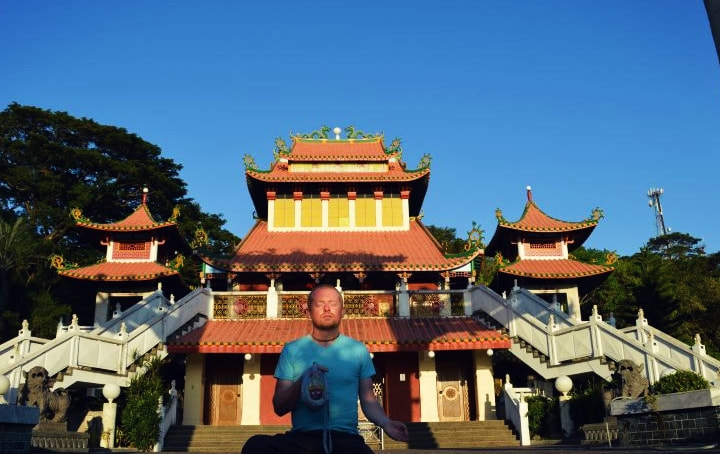Meditation
|
'To meditate' is defined as the practise of focusing ones mind for a period of time for spiritual purposes or as a method of relaxation (Oxford English dictionary). Our Lake Isle Retreats Meditation sessions are designed to satisfy these two motivations.
As long ago as 1500 years before the present, early monks in Ireland established monasteries and silent retreats on several islands of Lough Erne. The feeling of meditation and calmness permeates the lakeland atmosphere, and we especially recommend you arise early and to experience this for yourself, even if the retreat you attend only begins at 8:30am. |
|
Experience our Meditation and Mindfulness classes
|
Meditation is a spiritual practice found in practically all religious and spiritual traditions, although the methods differ. Here we look at how many people connected with the Vedic texts of ancient India attempts meditation practises.
Traditional yogic systems employ complex meditation techniques, often working with different postures to align our external and subtle selves and focus our minds towards self-realization. To quiet the mind and provide a point of focus, yogis are advised to concentrate on mantras including Sanskrit syllables, the impersonal Om mantra, names of God, or inspiritational verses of the Bhagavad Gita.
The Vaishnava tradition recommends that chanting Holy Mantras is a particularly effective method of spiritual awakening, simultaneously opening us to an incredibly empowering experience.
In this system, meditation has three distinct forms: japa, kirtan and sankirtan. In japa, the meditator individually and softly recites a mantra with the use of beads, similar to a rosary. Kirtan is a public meditation, in which one loudly sings the Nama, or Holy Names, accompanied by musical instruments. When performed in a group this is called sankirtan, or san-kirtan: the complete Kirtan.
This entire process is centred around the recitation of the names of Govinda, Krishna, Hari and Rama. The prayer or mantra that devotees repeat is called the Maha Mantra, or the “great mantra for deliverance.” It is made up of three words Hare, Krishna and Rama. Hare refers to God’s feminine energy. Krishna and Rama refer to the Supreme as the all-attractive and all-powerful one who is the source of all pleasure. Repetition of this mantra awakens the soul and brings strength, peace and happiness. It ultimately connects us with the source of the universe and reveals our original spiritual life of eternal bliss and knowledge.
Traditional yogic systems employ complex meditation techniques, often working with different postures to align our external and subtle selves and focus our minds towards self-realization. To quiet the mind and provide a point of focus, yogis are advised to concentrate on mantras including Sanskrit syllables, the impersonal Om mantra, names of God, or inspiritational verses of the Bhagavad Gita.
The Vaishnava tradition recommends that chanting Holy Mantras is a particularly effective method of spiritual awakening, simultaneously opening us to an incredibly empowering experience.
In this system, meditation has three distinct forms: japa, kirtan and sankirtan. In japa, the meditator individually and softly recites a mantra with the use of beads, similar to a rosary. Kirtan is a public meditation, in which one loudly sings the Nama, or Holy Names, accompanied by musical instruments. When performed in a group this is called sankirtan, or san-kirtan: the complete Kirtan.
This entire process is centred around the recitation of the names of Govinda, Krishna, Hari and Rama. The prayer or mantra that devotees repeat is called the Maha Mantra, or the “great mantra for deliverance.” It is made up of three words Hare, Krishna and Rama. Hare refers to God’s feminine energy. Krishna and Rama refer to the Supreme as the all-attractive and all-powerful one who is the source of all pleasure. Repetition of this mantra awakens the soul and brings strength, peace and happiness. It ultimately connects us with the source of the universe and reveals our original spiritual life of eternal bliss and knowledge.


